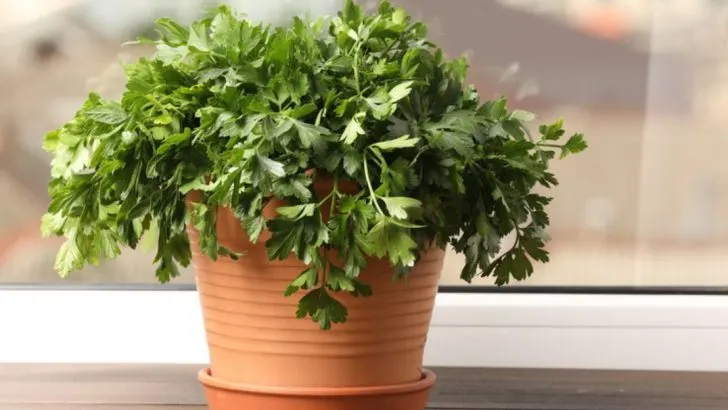If you’re tight on space or just prefer a more manageable gardening setup, growing vegetables in buckets is a smart, simple solution. Not only does it give you the freedom to plant fresh produce anywhere, but it also helps you control growing conditions, like soil and drainage, better than in traditional garden beds. And the best part? You can keep these buckets outdoors or indoors, so you’re never without fresh vegetables, no matter the season.
From tomatoes and peppers to leafy greens and root vegetables, there’s a surprising number of plants that thrive in containers. It’s a great way to enjoy homegrown veggies without a lot of hassle or a massive garden plot. With just a few basic supplies and a little know-how, you can be harvesting your own produce all year round, bringing fresh flavor right to your table.
Tomatoes
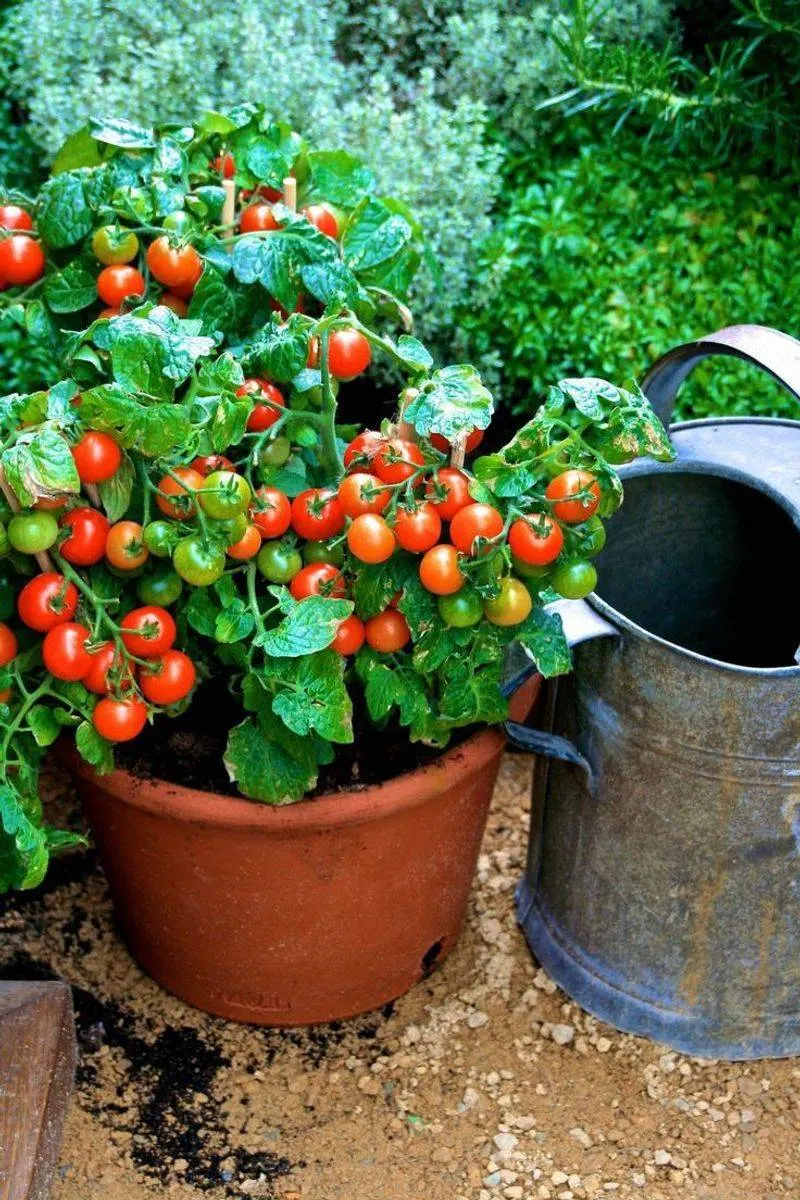
Tomatoes are a favorite among home gardeners for their versatility and flavor. When growing tomatoes in buckets, ensure they have ample sunlight and regular watering.
Use a sturdy cage or trellis to support the plants as they grow.
Choose determinate or bush varieties for smaller spaces, as they are more compact and suitable for container gardening. Cherry tomatoes are especially well-suited for buckets and can provide a bountiful harvest.
Enjoy the taste of fresh tomatoes in your salads, sauces, and sandwiches throughout the year.
Lettuce
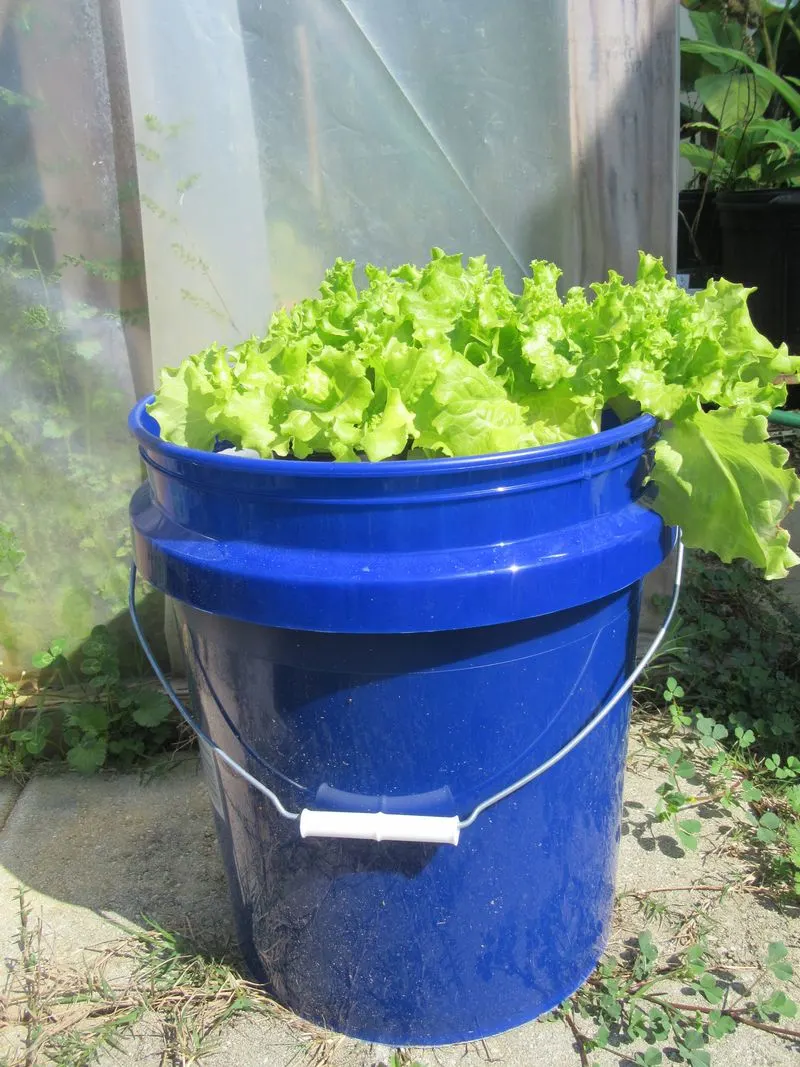
Lettuce is an ideal vegetable for bucket gardening, offering a quick and easy way to enjoy fresh greens. With various types such as butterhead, romaine, and leaf lettuce, you can have a continuous supply.
Lettuce grows best in cool weather; however, you can extend its season by moving buckets into the shade during hot months. Regular watering is key to maintaining its crisp texture, and you can harvest leaves as needed for salads and sandwiches.
This makes lettuce a practical choice for year-round growing.
Spinach
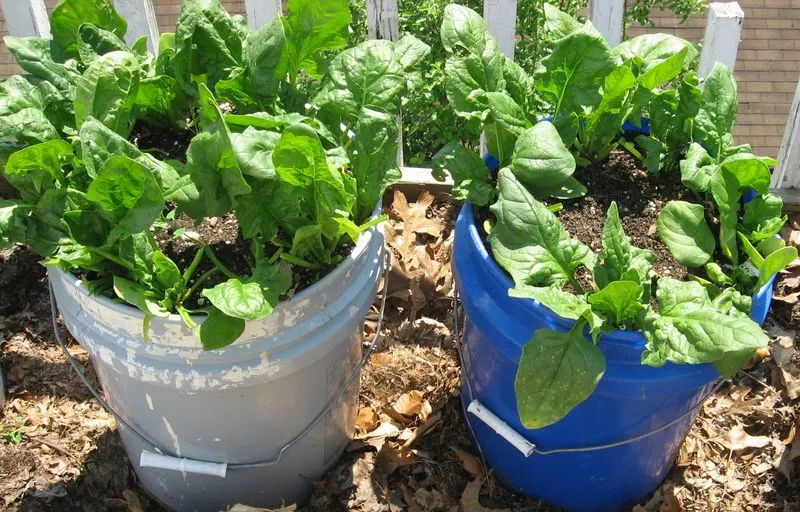
Spinach is a nutritious and versatile leafy green that thrives in buckets, perfect for salads and cooking. Its compact growth habit makes it suitable for small spaces.
Plant seeds directly in the bucket, and you’ll soon see lush, green leaves ready for picking. Spinach prefers cooler temperatures, but you can grow it indoors during colder months.
Harvesting is simple: just snip outer leaves regularly to promote new growth, ensuring a steady supply of this superfood.
Carrots
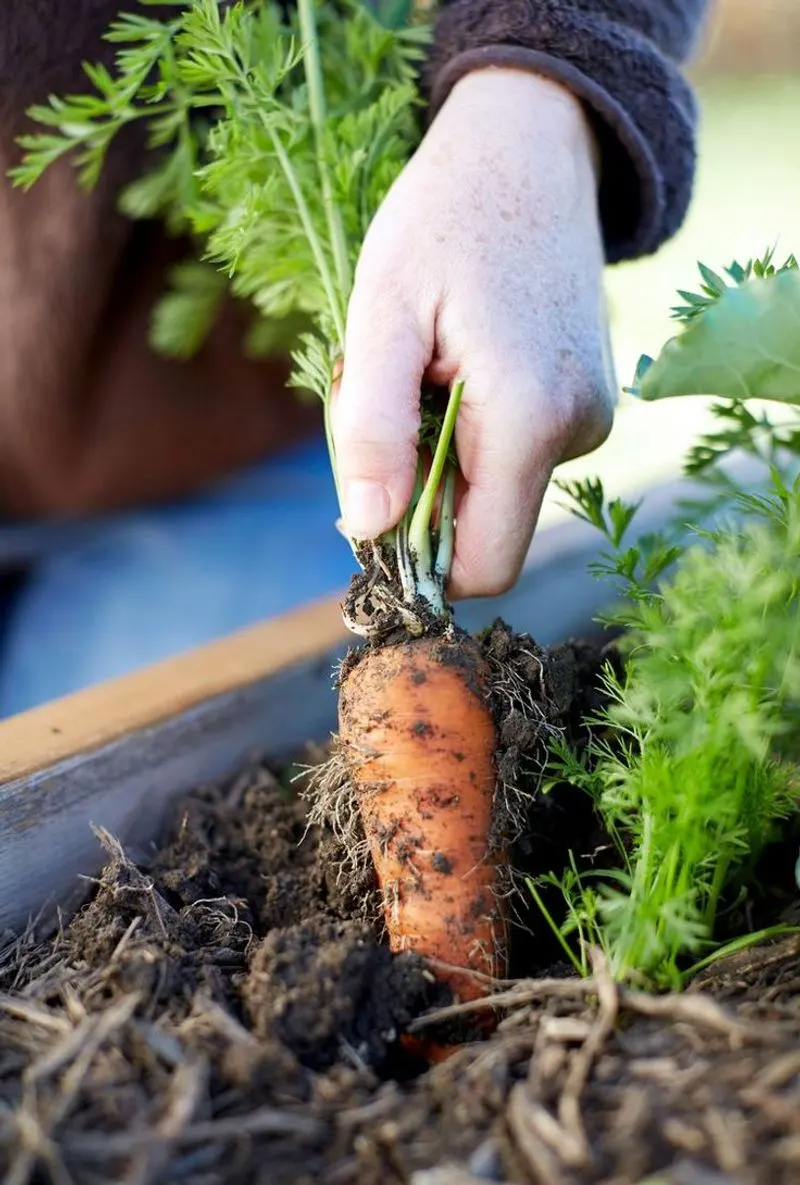
Carrots can be grown successfully in buckets, offering home gardeners a sweet and crunchy treat. Choose shorter varieties, like ‘Nantes’ or ‘Parisian,’ which are well-suited for container life.
Ensure the bucket is deep enough to accommodate the roots and use loose, well-draining soil. Regular watering and thinning of seedlings are crucial for healthy growth.
Harvesting your own carrots provides not only freshness but also satisfaction in seeing your efforts bear fruit.
Radishes
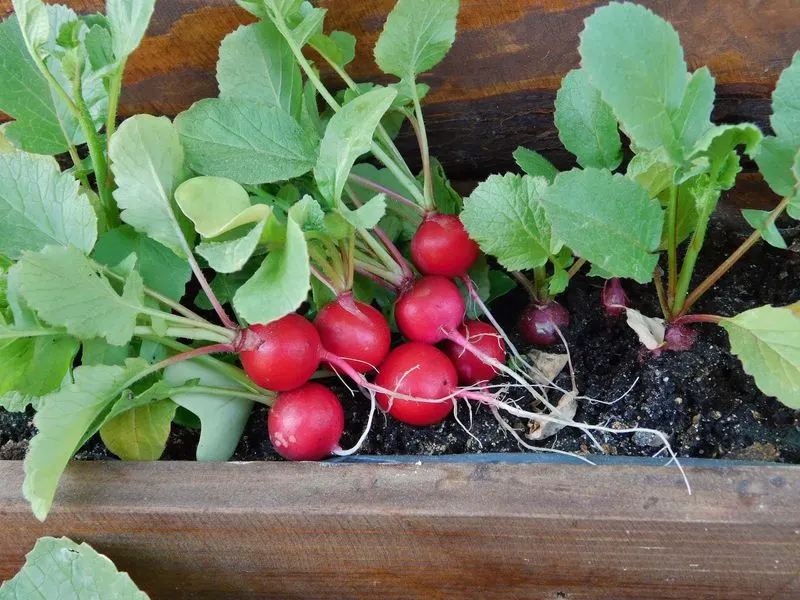
Radishes are one of the fastest-growing vegetables, making them perfect for impatient gardeners. They thrive in buckets with minimal effort.
Plant seeds directly in the soil, and within a month, you’ll have crisp, spicy roots ready to enjoy. Radishes prefer cooler weather, so place buckets in a shaded area during warm spells.
Regular harvesting encourages continuous growth, allowing you to savor these crunchy delights in salads or as snacks.
Peppers
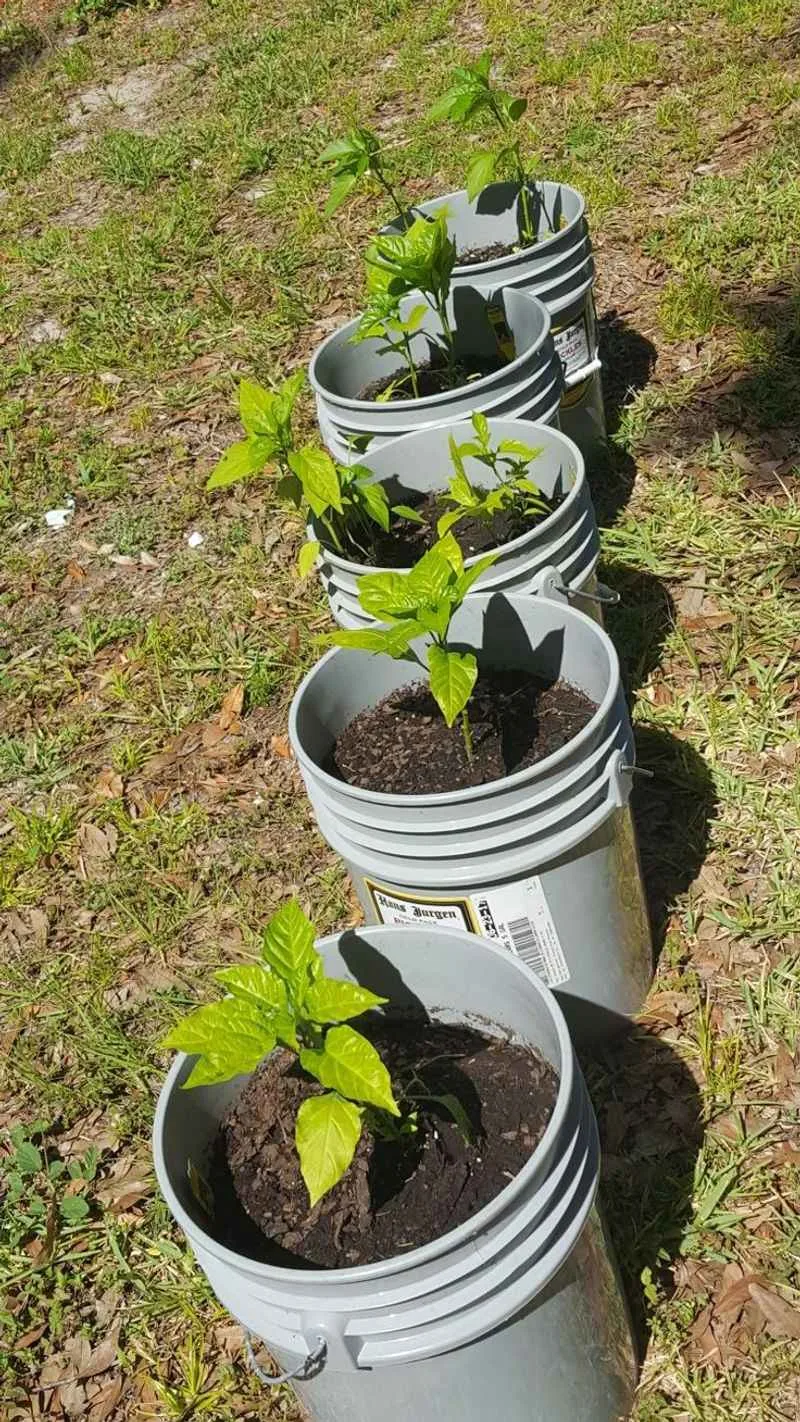
Peppers add color and flavor to any dish, and growing them in buckets is straightforward. Bell peppers, jalapeños, and other varieties can thrive with the right care.
Ensure they receive plenty of sunlight and consistent watering to produce vibrant, flavorful fruits. A stake or small cage provides support as the plant grows.
With a variety of colors and heat levels, peppers from your bucket garden will spice up your culinary creations.
Kale
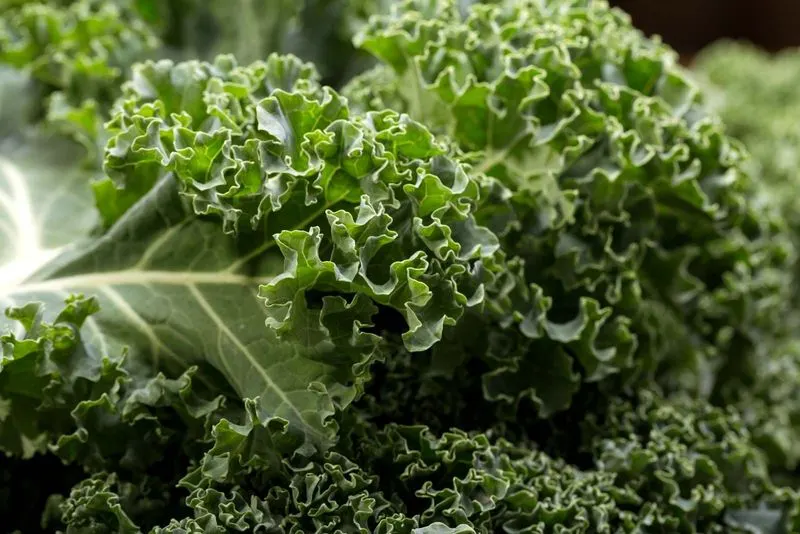
Kale is a hardy green that adapts well to bucket gardening, providing nutritious leaves for smoothies, salads, and more. It thrives in cool temperatures and partial shade.
Plant kale in rich, well-draining soil, and keep it consistently watered. Regular harvesting of the outer leaves promotes new growth, keeping your bucket garden productive.
Whether you prefer curly or dinosaur kale, this vegetable offers a resilient and rewarding gardening experience.
Beets
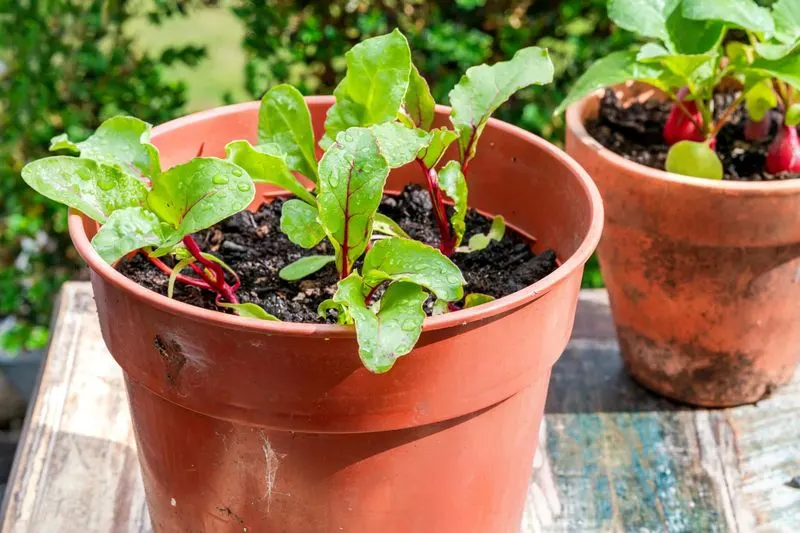
Beets are a versatile root vegetable that grows well in buckets, offering both edible greens and roots. Select a deep container and plant seeds directly.
Beets require full sun and consistent moisture for optimal growth. The greens can be harvested early for salads, while the roots should be left to mature.
Enjoy the sweet and earthy flavors of homegrown beets, perfect for roasting or pickling.
Green Onions
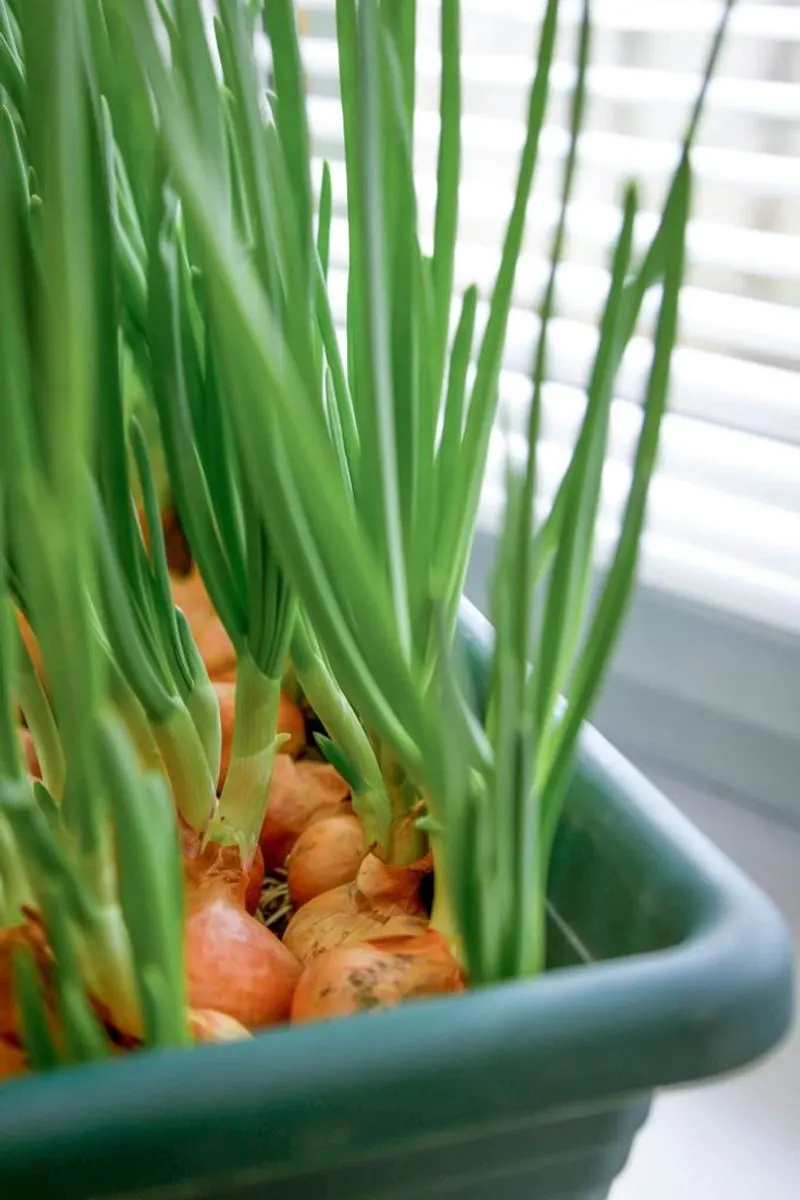
Green onions are a convenient choice for bucket gardens, providing flavor without taking up much space. Grow them from seeds or bulbs, and they’ll flourish with regular watering.
Place the bucket in a sunny spot, and you’ll have fresh green onions available for garnishing dishes. Their quick growth and ease of care make them a delightful addition to your homegrown produce.
Snip the stalks as needed, and watch them regrow, ensuring a continual supply.
Arugula
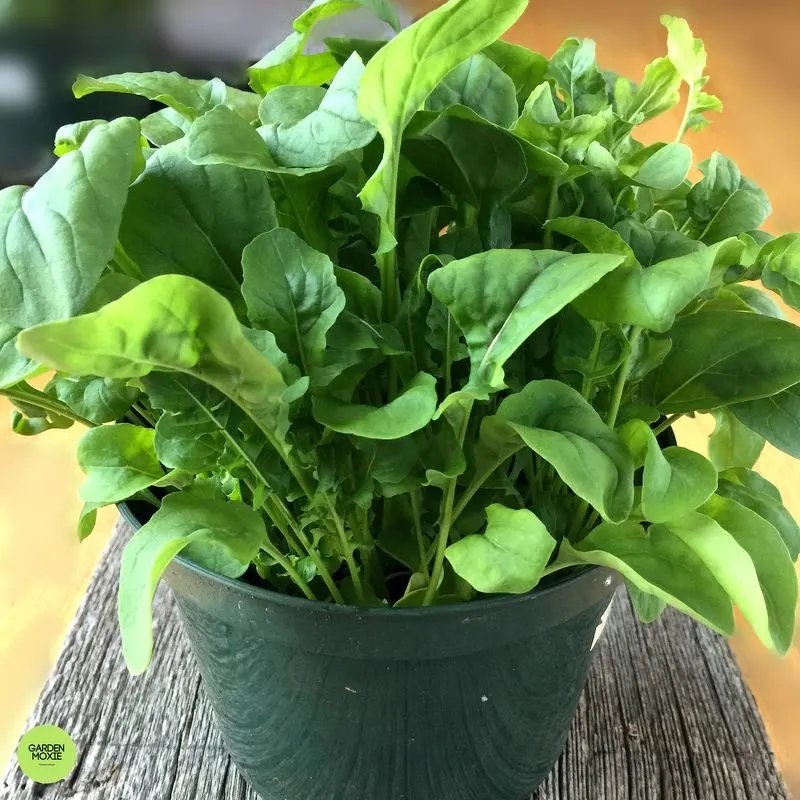
Arugula offers a peppery punch to salads and dishes, thriving in bucket gardens. Its rapid growth makes it an excellent choice for year-round cultivation.
Sow seeds directly in the bucket and place it in a sunny location. Regular watering encourages lush growth, and you can harvest leaves frequently.
Arugula’s bold flavor enhances a variety of meals, making it a desirable pick for home gardening enthusiasts.
Cucumbers
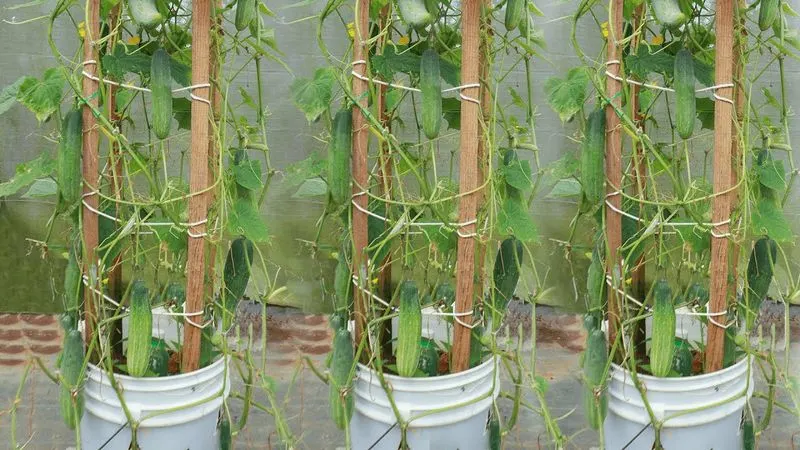
Cucumbers can flourish in buckets with the help of a trellis to support their climbing habit. Choose bush or dwarf varieties for the best results.
Ensure they receive ample sunlight and consistent watering to produce crisp cucumbers. By training the vines upward, you save space and promote healthy growth.
Whether for salads or pickling, cucumbers from your bucket garden offer refreshing flavor and crunchy texture.
Swiss Chard
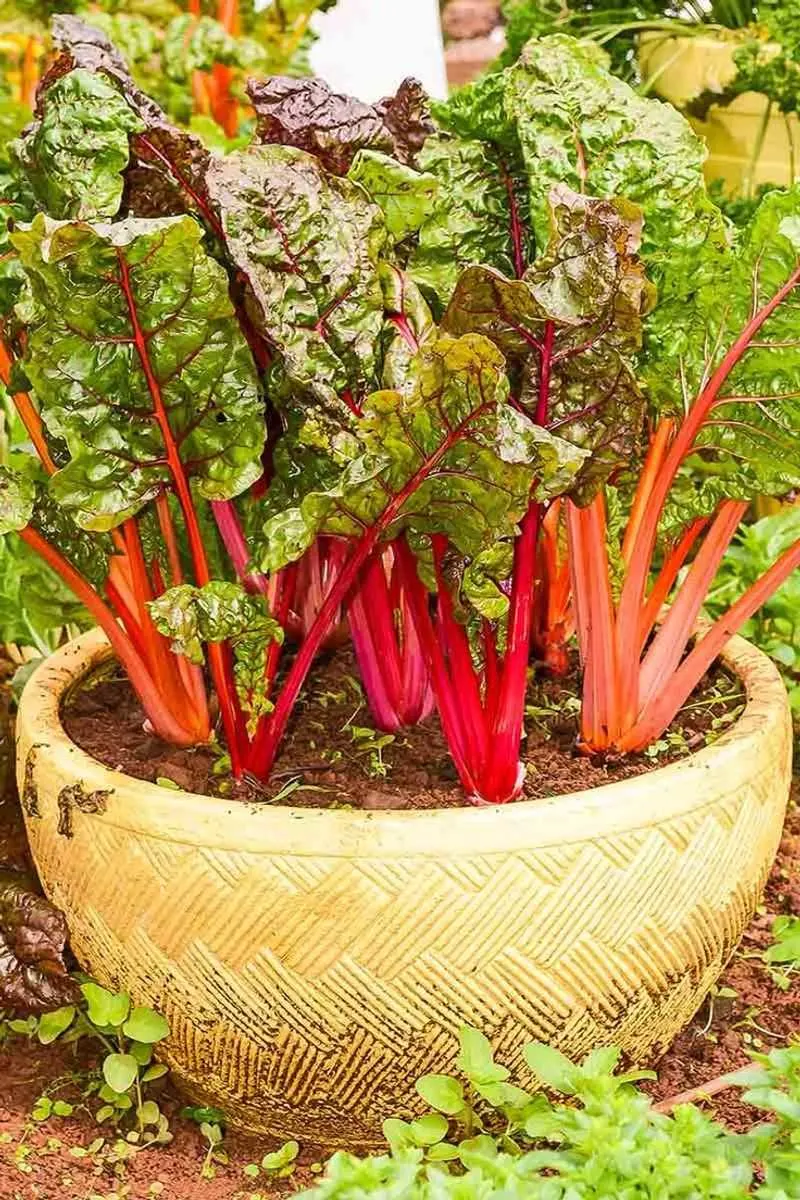
Swiss chard is a visually stunning and nutritious leafy green that grows well in buckets. With its colorful stalks and robust leaves, it adds beauty to any space.
Plant chard in rich soil with consistent watering to ensure a bountiful harvest. Regularly pick the outer leaves to encourage new growth.
Swiss chard’s versatility in cooking makes it a valuable addition to any bucket garden, suitable for sautéing, salads, and more.
Zucchini
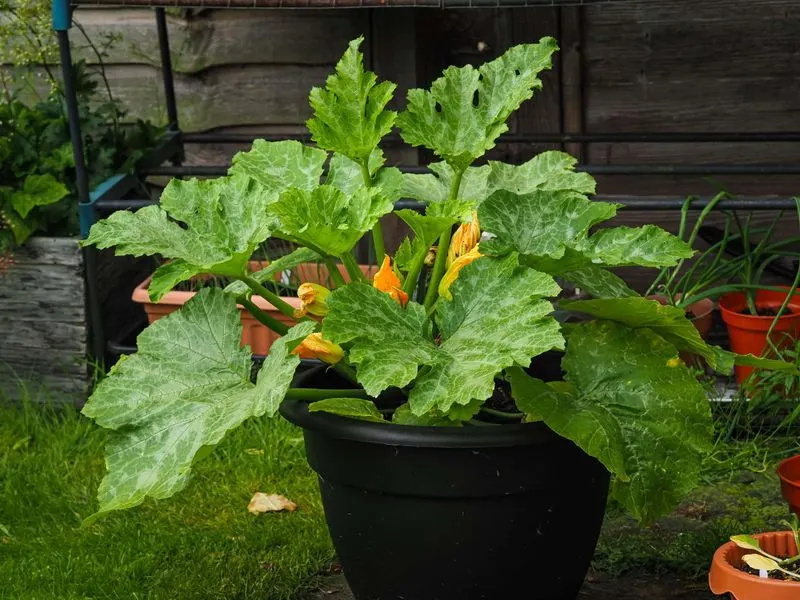
Zucchini is a prolific vegetable that can thrive in bucket gardens with the right care. Select bush varieties that are compact and well-suited for containers.
Ensure the bucket receives plenty of sunlight and regular watering. Zucchini plants produce large, delicious fruits, perfect for grilling, baking, or adding to stir-fries.
Their rapid growth and high yield make them a rewarding choice for gardeners.
Basil
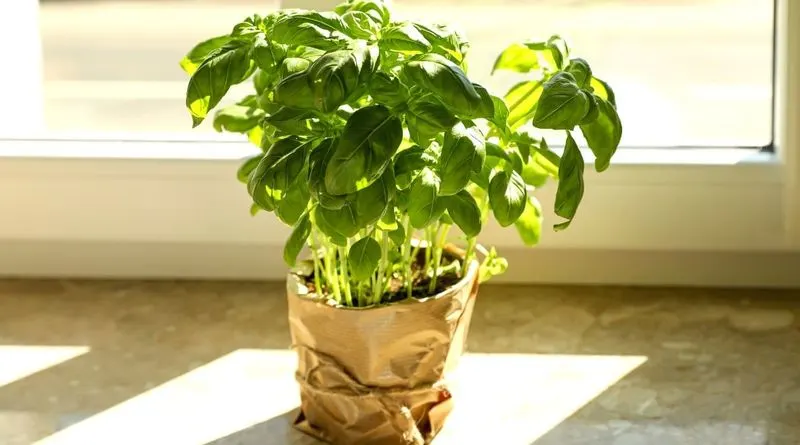
Basil is a fragrant herb that complements many dishes and thrives in bucket gardens. Its aromatic leaves add a fresh twist to culinary creations.
Plant basil in a sunny spot with well-draining soil, and water consistently. Regularly pinch the tops to promote bushy growth and prevent flowering.
With its vibrant flavor, basil enhances pasta, salads, and more, making it a must-have for home gardeners.
Eggplants
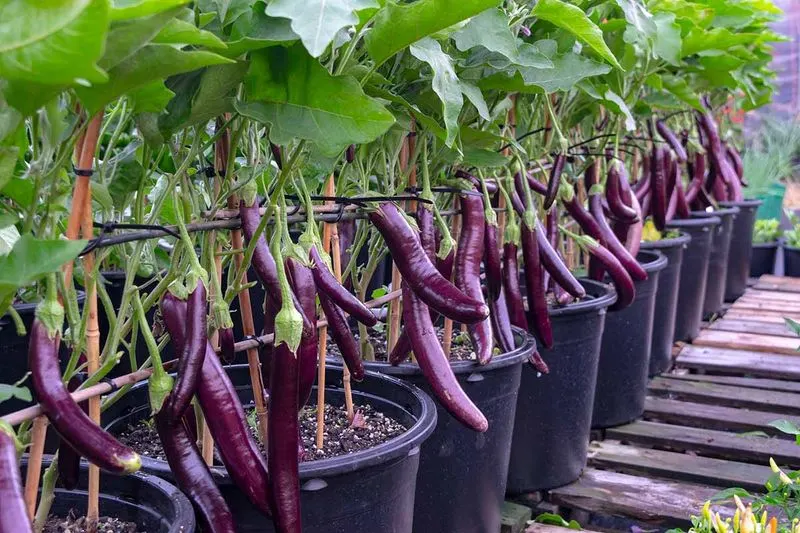
Eggplants can be grown successfully in buckets, especially when selecting compact varieties like ‘Fairy Tale’ or ‘Hansi. ‘ These plants require full sun and consistent watering to produce their glossy fruits.
Support the plant with a small stake as it matures, ensuring the fruits are off the ground. With their unique taste and texture, eggplants from your bucket garden can enhance a variety of dishes, from grilling to curries.
Parsley
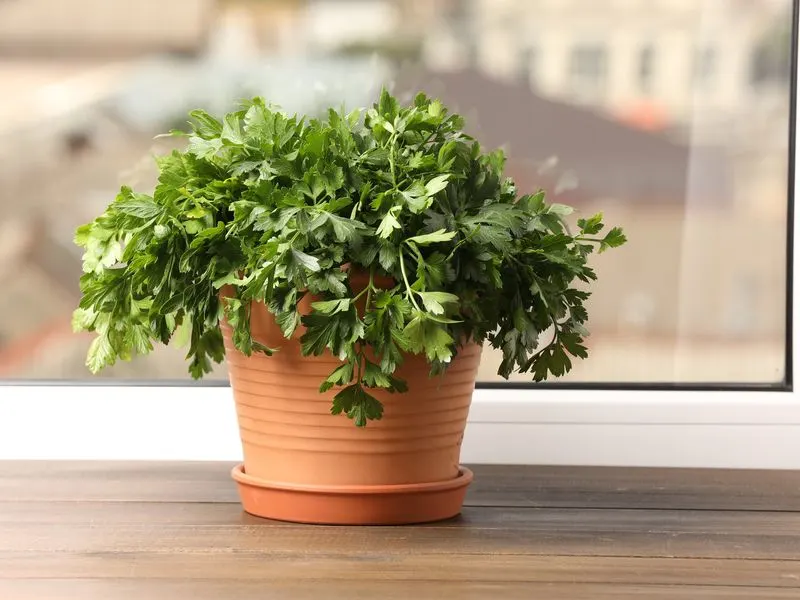
Parsley is an easy-to-grow herb that makes a flavorful addition to any bucket garden. Its vibrant green leaves add freshness to numerous dishes.
Plant parsley in a sunny or partially shaded spot with well-draining soil. Regular watering helps maintain its lush appearance.
Harvest leaves as needed, and the plant will continue to produce. With its aromatic quality, parsley is perfect for garnishing and seasoning.
Celery
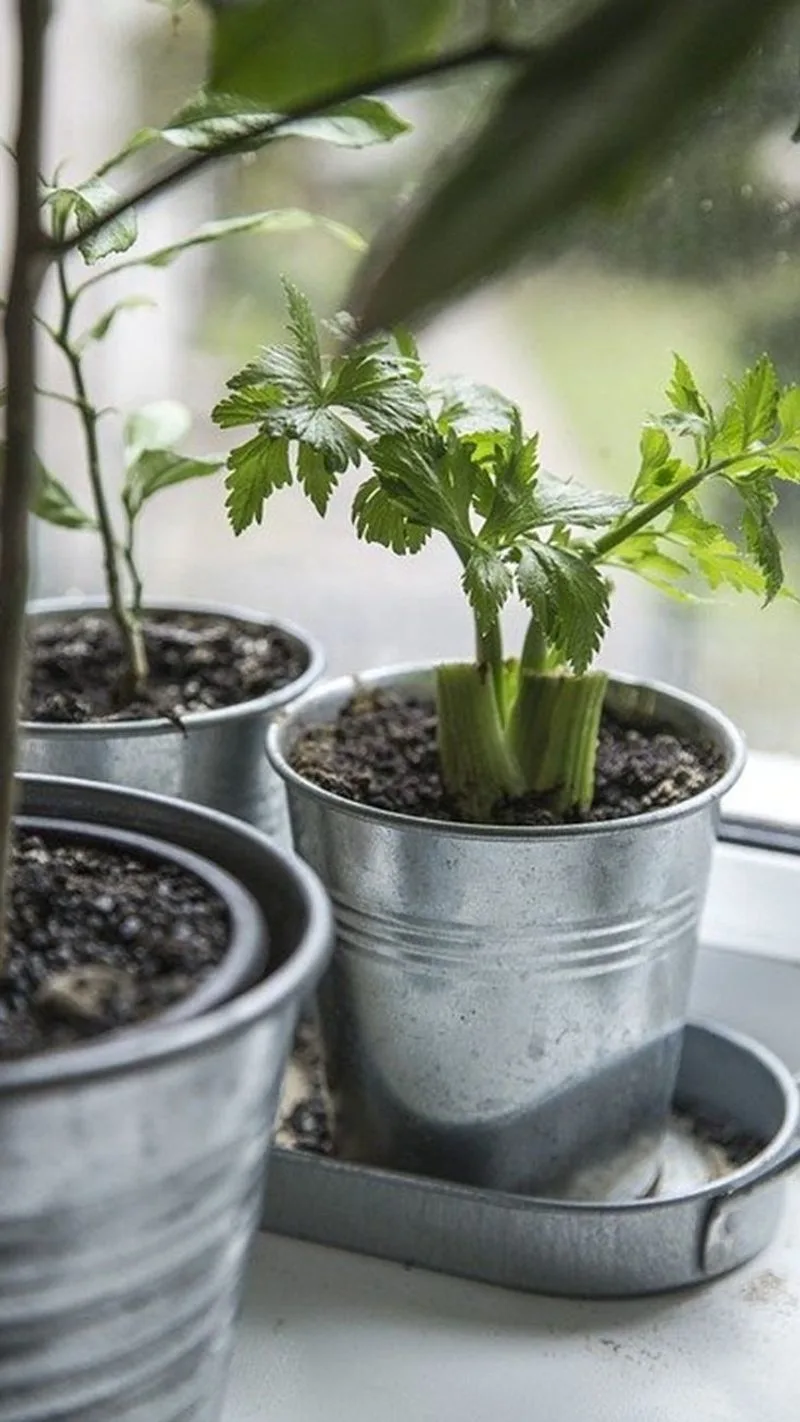
Celery can be successfully grown in buckets, providing a crunchy addition to your homegrown produce. Choose a deep bucket, as celery has long roots.
Place it in a sunny spot and maintain consistent moisture levels to promote healthy growth. Harvest stalks as needed, enjoying the fresh flavor in salads, soups, and snacks.
Growing celery in buckets offers convenience and rewards with crisp, tasty stalks.
Dill
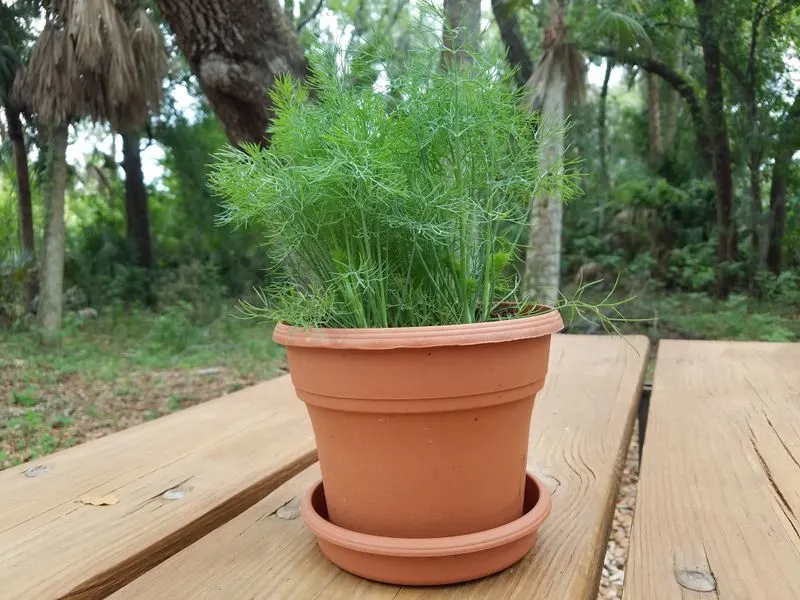
Dill is a fragrant herb that thrives in buckets, known for its delicate leaves and distinct flavor. It’s an excellent choice for container gardening, offering both culinary and decorative appeal.
Plant dill seeds directly in the bucket and place it in a sunny location. Regular watering helps maintain its lush appearance.
Use dill in pickles, salads, or as a garnish, and enjoy the fresh taste it brings to your dishes.
Thyme
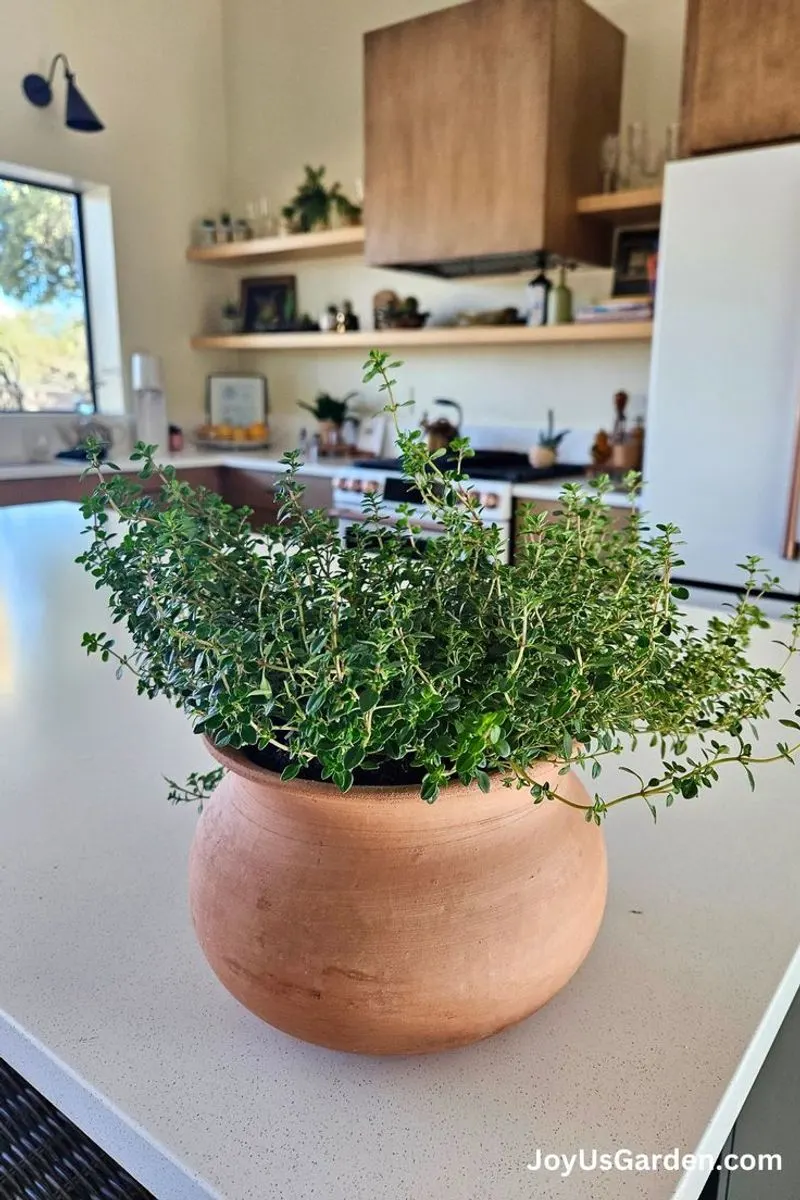
Thyme is a versatile herb that grows well in buckets, offering aromatic leaves for cooking. Its compact nature makes it suitable for small spaces.
Plant thyme in well-draining soil and place it in a sunny area. With minimal watering, thyme thrives and enhances your culinary creations.
Regular trimming encourages bushy growth, providing a steady supply of this fragrant herb for seasoning meats, vegetables, and more.
Mint
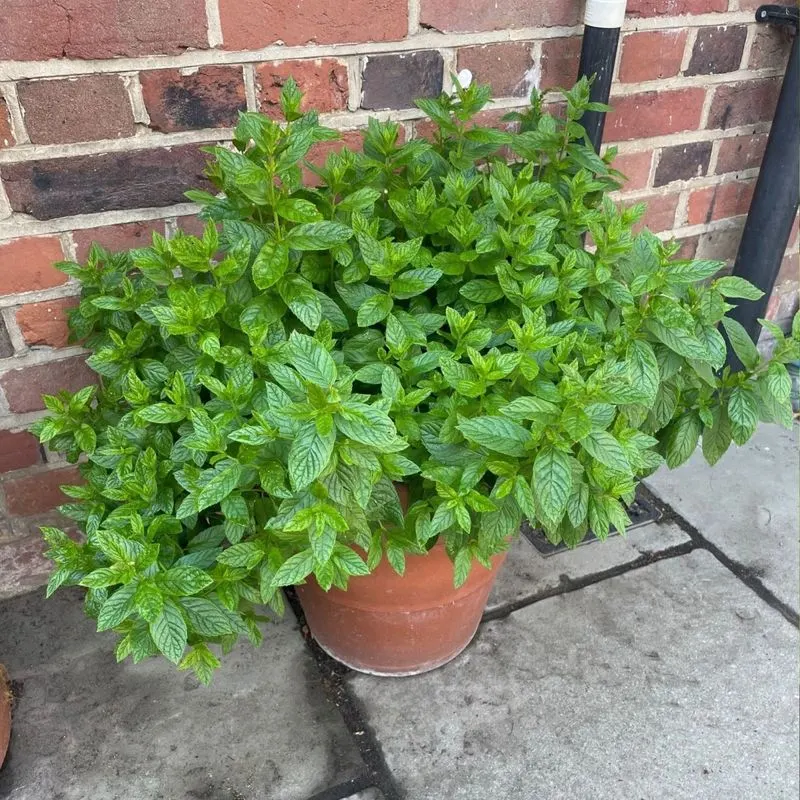
Mint is a hardy herb that flourishes in bucket gardens, known for its refreshing flavor. Its vigorous growth habit makes it ideal for containers, preventing it from spreading uncontrollably.
Place mint in a partially shaded area, with regular watering to keep it lush. Harvest leaves as needed for teas, desserts, and garnishes, enjoying the invigorating taste of homegrown mint.
Its ease of cultivation and fresh flavor make mint a popular choice for gardeners.

